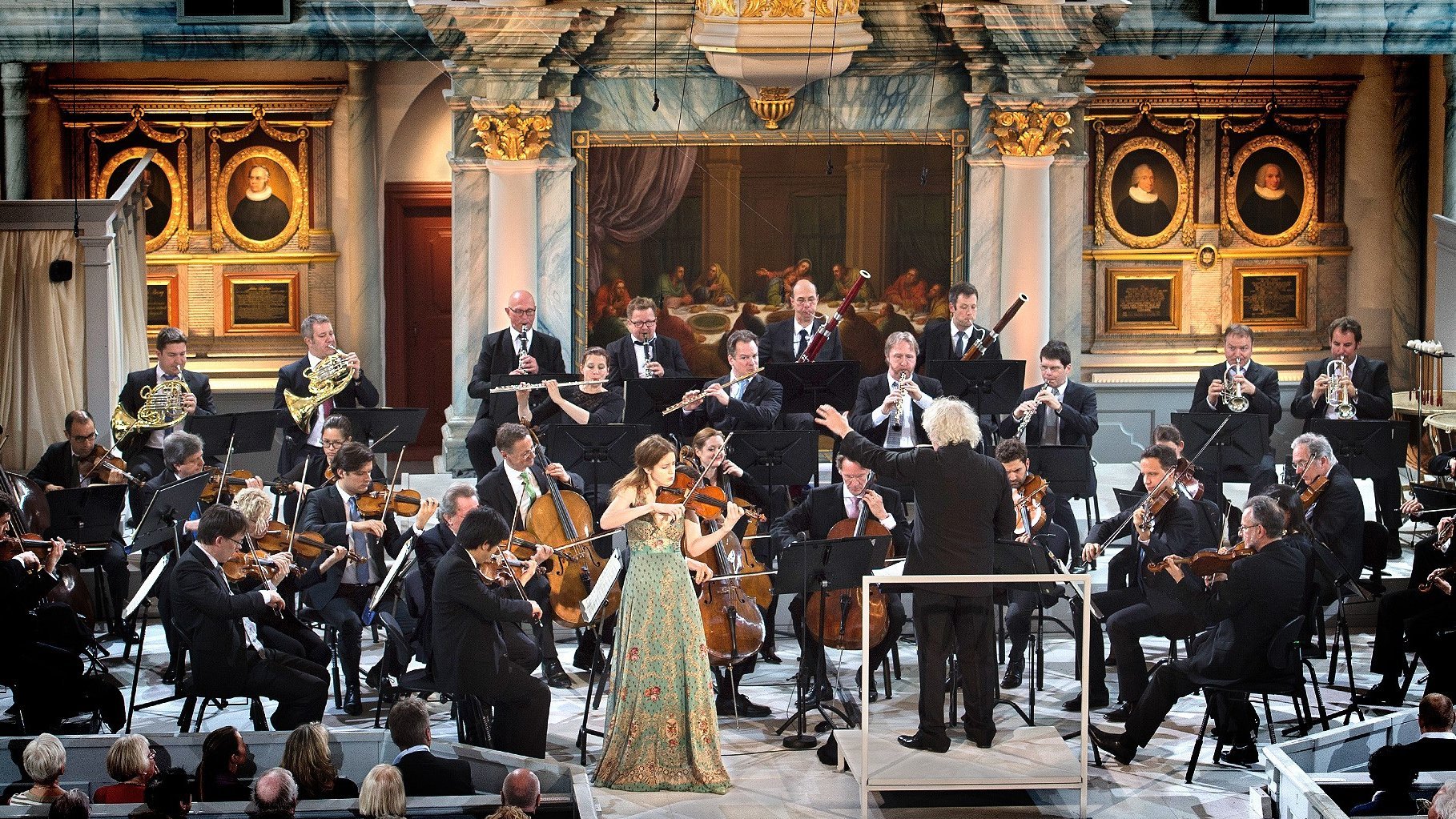- Orchestra History

As deeply rooted as the Berliner Philharmoniker are in their home town and their unique concert hall, since its founding in 1882 the orchestra’s sphere of activity has expanded beyond the city and Germany, and they have also long extended beyond the borders of Europe. Two factors in particular are decisive for the orchestra’s status as musical “global player”: on the one hand, the regular and geographically ever-growing concert tours which began shortly after the orchestra was founded, and on the other, media activities which present the performances of the Berliner Philharmoniker to audiences all over the world using the best technology available.
The European Concert, which has taken place on 1 May every year since 1991, combines both elements in a unique way: it presents a place of cultural significance in the “Old World”, and it is broadcast on TV to audiences all over the world and also now to users of the Digital Concert Hall. Last but not least, the recordings ensure a complete documentation of this concert series which now spans more than a quarter of a century. The date of 1 May, which commemorates the foundation of the orchestra on the same day in the spring of 1882, and the year 1991, in which the concert took place for the first time, are both of symbolic significance to the European Concert. Although the first plans for the project go back to before the fall of the Berlin Wall, the European Concert was launched after the reunification of Germany and in the light of changed East-West relations. “With our musical activity, we want to emphasise the cultural features of the new Europe,” as a statement by the Berliner Philharmoniker said at the time.
From Lisbon to Moscow
Since then, the European Concerts have created a map that stretches from Lisbon in the west to Moscow in the east, and from Røros in the north to Paphos on Cyprus in the south. The stated European aim does not stop at the borders of the EU either, as is demonstrated by performances in Russia, Norway and Turkey. And, in a sense, the Philharmoniker even host themselves: the 10th anniversary of the event was held in the Philharmonie, and again to mark the 50th anniversary of the Scharoun-designed building in 2014. The works selected convey the richness of European music history: Wolfgang Amadeus Mozart, still the epitome of the European composer, was the focus of the two European Concerts in Prague which commemorated the 200th anniversary of Mozart’s death in 1991, and the 250th anniversary of his birth in 2006. The former was conducted by the then newly appointed chief conductor Claudio Abbado in the Smetana Hall of the Art Nouveau Prague Municipal House, and the latter by Daniel Barenboim in the neoclassical Estates Theatre, which among other things was the venue of the world premiere of Mozart’s Don Giovanni.
In general, the European Concerts like to celebrate the “genius loci” of the host cities and countries: Joaquín Rodrigo’s Concierto de Aranjuez was performed in Madrid and Elgar’s Cello Concerto in Oxford, as were Stravinsky in Moscow, Verdi in Naples and Palermo, Bartók in Budapest, and Chopin in Krakow. The selection of world-famous soloists and ensembles also follows the same pattern: in Lisbon, the Philharmoniker performed with the Portuguese pianist Maria João Pires; in Athens, the Greek Leonidas Kavakos performed the Sibelius Violin Concerto; the Swedish Chamber Choir performed with the Philharmoniker in Stockholm, and in Røros, Norway, the violinist Vilde Frang made her debut with the orchestra.
The richness of European culture
The venues of the concerts are often as atmospheric as the music: the Philharmoniker performed in the open air in the ancient Odeon Theatre at the foot of the Acropolis, and in the Swedish Vasa Museum, a recovered warship which had sunk in the 17th century formed the backdrop to the overture of Wagner’s The flying Dutchman. The magnificent opera houses in Palermo and Saint Petersburg have also been performance venues, as have the magnificent Gothic St. Mary’s Church in Krakow and the intimate Baroque church in the Norwegian mining town of Røros.
However, these venues should be more than an impressive backdrop and rather be a visual symbol for the fundamental idea behind the European Concerts. Olaf Maninger, principal cellist and member of the media board of the orchestra, describes this aim as follows: “In these concerts, the European idea as expressed in music is combined with the captivating appearance of the often unusual performance venues. By giving concerts in places as diverse as the Palazzo Vecchio in Florence, the Escorial in Madrid or the Palace of Versailles, one gets a sense of the richness of European culture.”